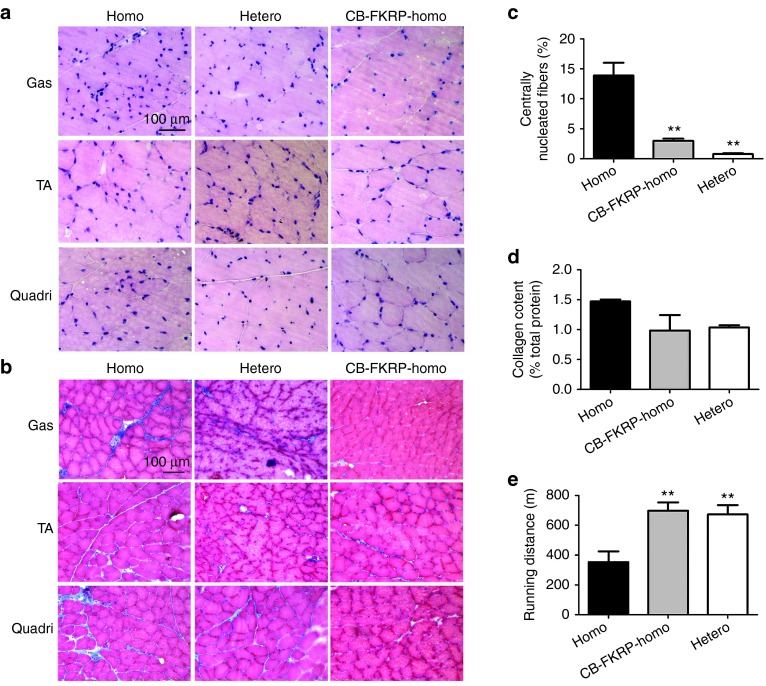Figure 3.
Delivery of AAV vector encoding fukutin-related protein (FKRP) in adult homozygous mice ameliorated dystrophic pathology and improved fibrosis infiltration. The AAV9-CB-FKRP vector was delivered into 9-month-old homozygous mice (hybrid background), and the mice were sacrificed 3 months after treatment. (a) H&E staining indicated that the skeletal muscle pathology was ameliorated after adeno-associated virus (AAV) treatment. Gas, gastrocnemius muscle; TA, tibialis muscle; Quadri, quadriceps (rectus femoris) muscle. (b) Masson's trichrome staining revealed a fibrosis infiltration reduction by the delivery of AAV vector encoding FKRP. (c) Quantification of centrally nucleated myofibers. All of the gastrocnemius muscle fibers (a minimum of 267 muscle fibers) were counted on each photo (objective ×10) of H&E staining, and at least three photos were included for each mouse. The percentile of centrally nucleated fibers was defined as the percentage of centrally nucleated fibers versus the total counted myofibers. The one-way analysis of variance (ANOVA) test was utilized for statistical analysis (**P = 0.0002; three animals were used for each group). (d) Quantification of collagen content in Gastrocnemius muscle. This analysis failed to show statistical significance (P = 0.08, n = 5), but did indicate there was a decreasing fibrosis trend. (e) Motor function recovery by AAV9-CB-FKRP treatment in older homozygous mice. The vector was delivered into 9-month-old male homozygous mice (hybrid background), and the treadmill test was performed 4 months after treatment (**P < 0.01 with one-way ANOVA; n = 5 for CB-FKRP homo and hetero groups, and n = 9 for homo group).

